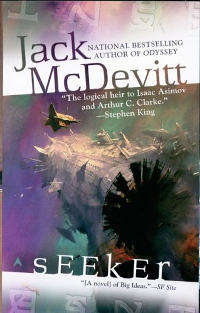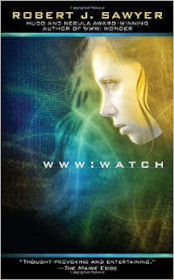Imagination lives from the search for atmospheres and climates found in music as in any art – what interest would present a creative expression if it did not stimulate imagination, escape, research of an elsewhere or a beyond of the triviality, the daily routine and its mediocrity? This article presents some paths and ways of traveling, inner exploration, prospective, utopian discoveries and speculations on the vanishing lines of what the present conceals, or ways to turn away from it through the windows or portals opened by literary creation.
These are presentations, simple looks and indications, reading notes organized in two themes: speculations and metaphors of the present, gathered here in the category of science fiction, or paths from elsewhere and beyond in the universe of fantasy.
- Greg Bear – Eon, Eternity, City at the end of time, Darwin’s radio
- Robert J. Sawyer – WWW Trilogy
- Joan D. Vinge – The Snow Queen
- Hugh Howey – Silo
- Charles Stross – Singularity Sky (2003) / Iron Sunrise (2004)
- Olaf Stapledon – Odd John, Starmaker
- Robert Charles Wilson – Burning Paradise, The Perseids
- Connie Willis – The Doomsday Book
- Jack Mc Devitt – Seeker
Greg Bear – Eon (1985)
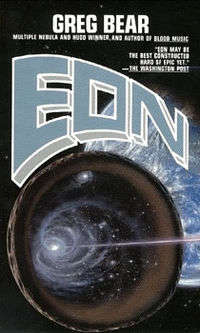
Complex and rich novel, full of characters, places and technological fancy at the border of metaphysics, Eon is the first volume of The Way dyptic. An immense artefact is getting into orbit around Earth, but we appear as its creators. Is it coming from the future ? From an alternative universe ? Are there contemporary scientists and researchers who could understand it, if not having created it in a close future ? Because this immense ship is desolated, emptied from its inhabitants but not its cities, yet a clear way to follow the builders seems to subsist : The Way, boundless, that opens in the last room…
The reading of a text that became uchronic is particular. Dating from the mid-eighties, Eon stages a survival of the eastern block around the 2000’s, but if Greg Bear isn’t kind to any house, the essential is elsewhere : the future of Mankind. Sure, the novel deplores the auto-destructive possibilities we have that only need a political alibi to start wars and total destruction of ourselves or the planet. But it doesn’t lock itself into the hardness of post-apocalyptical survival and the continuous violence it leads to, even if the complex society of this far future results from this planetary destruction. Indeed, speculations about immortality offered by storage technologies and personality matrix beyond corporal death are fully actual in a transhuman context well known by the author. What should we do with our present technology that will transform us for sure, even if we remain politically divided about its status, including about the way it will define our relation to our body ? Greg Bear also sets Ralph Nader ideas, at the heart of political divisions of a society that already foresee The City at the End of Time’s one, his great work to come.
Technological speculations continue and find an echo in more recent works like Vernor Vinge’s Rainbows End : why keep decorating and furnishing an apartment, complexes of houses or a whole city with real objects, since we can project almost everything we like on walls built to this end, even icons replacing electric switches ? Simply touching these icons activates the home artificial intelligence for it to set the lighting, the temperature or other environmental parameters… We think of the wall decorations considered by Philip K. Dick, featured with cerebral implants that make them look real (as Total Recall illustrates it). Greg Bear gives it a more realistic and less alienated image, far beyond a simple decoration to cheer up a daily living environment.
Inhabitants the utopia’s at the end of of The Way don’t limit themselves with an automation that blows up boundaries of virtual and real – in a more likely way today than when this novel was written (think of the connected clothes in Vernor Vinge’s Rainbows End). Relation to language and therefore to others is deeply modified by the series of icons surrounding the characters for them to communicate, like a cloud of images all fully significant expressing hues, emotional states and tribal belongings often more important than what the characters say expressively. Yet should we have this little equipment in our possession allowing us to “pict” such icons, but none of this is a problem in this utopian society of extreme plenty. However, we can question the representation the author gives of foreign languages learning, that only takes a few hours, thanks to the future’s technologies…
Greg Bear – Eternity (1988)
The following of Eon still offers this appreciable delicacy to stay away from tedious descriptions of post-apocalyptical violence, an unfortunately more and more invading topic in science-fiction since 15 years. Without unveiling the plot of these 2 novels, it is clear that utopia has a history, enemies, and is facing decisive moments and responsibilities which are not unanimous in a community and a city existing now and in past and future history – that is to say, for the reader, the uchronic future of East-West conflict. It the novel became uchronic, it already was when published since a part of the story happens in a world whose history strayed from ours since Alexander the Great’s death – Steampunk lovers may find their beloved topics in the description of a strange universe threatened by conquerors faraway in time and space that dimensional portals abolish, conquerors also distant from everything we can call “human”. Greg Bear offers a kind of Space Opera without spacecraft (not unconnected with Stargate series), the stake here is not the legacy of a distant past anymore, but the contact with a faraway future, even more distant in time than is the utopian city in the space at the end of the Way.
Indeed, a meditation about human and the move that transcend himself spreads in the background of this second novel’s plot, the author expressing his admiration for Olaf Stapledon’s beloved topics and the contemplation of the end of time, horizons and overlapping parallels to infinity.
Ambitious double novel, Eon/Eternity pushes very far the enunciation of political, technological, scientific and metaphysical speculations in the creation of a universe full of places, times and characters, searching for a plausibility by rooting itself in the developments of contemporary physics. Yet, real stakes are elsewhere, in a metaphysical meditation about human nature and what can subsist of it beyond corporal existence as we know it. In this transhuman construction with metaphysical stakes, Greg Bear can divert and sometimes lose his reader, but he always knows how to take into account the emotional dimension of the person and the life of his characters by building a story that holds spellbound while setting far and ambitious speculative constructions.
Greg Bear – City at the end of time (2008)
This very complex text is first of all a novel opening up a dark and intriguing world, very close to ours at the beginning, whose characters live destinies that are expected to cross in the course of a narrative that quickly reveals Metaphysical stakes, including this City at the end of times prefigured in earlier novels of the author. Without dissolving the narrative in philosophical speculation, Greg Bear knows how to tell us a story with complex characters more and more manipulated by their destiny, or their profound nature, at least by forces that transcend them and manipulate more and more deeply the reality. The latter is altered, degraded, contracted, and shifts from the history of some very strange people to a history of the future which is only partially reported, giving depth to what is only suggested. Reality has an end, a term as a very different enemy from the incredibly powerful black wizard of many fantasy novels. Insensibly, one goes from wickedness and violence to the growing grip of nothingness that closes on the universe, making time itself devoid of reality, because all the stakes are at the end of the road. The universes and crossed destinies of the beginning take on their full significance in the unity and the heart of reality: the armillary sphere, as the end of the utopia being at infinity, at the meeting of parallels, metaphysical representations that Greg Bear knows how to introduce with his vertiginous speculation.
In this very complex and puzzling construction, the author takes us beyond science fiction (is there any technological or scientific speculation in this text, at the root of his universe? ) in an alteration of utopian literature whose meaning is no much longer political. But we still find descriptions cleverly distilled of this closed society and its very ancient titanic architecture. The journey and the exploration of a dangerous universe are still present, but it is no longer the search for a lost Eldorado: utopia is now placed at the heart of metaphysics in a universe all the more totalitarian that humanity has become itself a form of technological manipulation. The future is so remote that there is hardly any explanation for the strange machines and improbable places which gradually supplant the last refuge of the fugitive at the beginning of the narrative: a gigantic and mysterious library.
At the same time a novel and a treatise on metaphysics, which is not always easy to pursue, the city at the end of time has considerably disrupted the genres of science fiction, utopian narrative, philosophical tale and speculation about the ultimate destinies of humanity in the continuity of the work of Olaf Stapledon, but certainly much more convincing from the point of view of narrative and imaginary construction. Continuity or transfiguration of the utopian literature from which science fiction comes? Work in any case major.
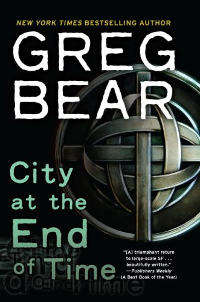
Greg Bear – Darwin’s radio (1999)
Greedy and clumsy palaeontologists discover in the mountains the mortal remains of a strange Neanderthal family with a child who seems modern, in a state of exceptional conservation. Their clumsiness causes the proliferation of a lightning-like epidemic that resembles a flu (one can not help but think of the beginning of Stephen King’s Scourge). This only affects women and causes miscarriages, and then the formation of a new fetus while the patient is recovering with difficulty. Is it the dawn of a new humanity, signifying the end of our species as we know it? Greg Bear places the problem of the evolution of man at the heart of his novels. In Darwin’s Radio, the theme is no longer metaphysical but genetic, with a very solid biological basis in a novel that can be devoured like a thriller.
Going back and forth with an immemorial past punctuate the captivating narrative of a CDC geneticist concerned in the foreground by the risks of contagion. Reflections on the nature of evolution question the notions of Darwinism and the finality of life in an original way, without the author taking a position or abandoning what is known about the nature of life. Such questioning prolongs the questioning of the deep nature of man and the possibility of an improvement of his species, or even of a destination, insofar as science now gives the matter to a reflection that has remained long confined to the fields of metaphysics. Greg Bear elegantly gives his reader the means of this reflection, without imposing any conclusions upon him.
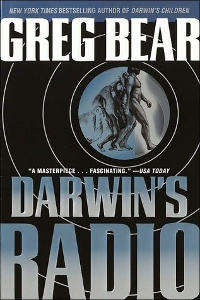
Robert J. Sawyer – WWW Trilogy : Wake – Watch – Wonder (2009 – 2011)
Optimism and kindness are qualities that are all the more appreciable because they may be too rare, especially in the dark, violent and even macabre worlds that are omnipresent in the science fiction of all periods, from HG Wells’ Morlocks to Terminator Steel Caverns. It is true that reflection about the future in the counter-utopian tradition does not lend itself to blissful optimism in the face of tomorrow’s singing or the kindness of men, science fiction mostly seeking to denounce the lies and traps behind such universes.
Robert J. Sawyer takes the opposite side of all this darkness in a trilogy that parallels the awakening to the world, to the others and to the adult age of a young blind girl and the awakening to the consciousness of an Artificial Intelligence whose power in exponential growth will necessarily change the world as and when it interacts with it. The fluid writing and the very solid and plausible course of events make the reading of this trilogy enjoyable. We are immersed in references to the geek culture that penetrates our everyday life, through social networks in particular, with irreproachable technological erudition, even with the retreat of a few years. Perhaps the investment in these novels of prominent personalities in the development of the Internet on a planetary scale as in transhumanism adds credit to a fully recognized work.
But can we really remain optimistic concerning the unpredictable and exponential growth of the artificial intelligence’s power ? One can not speak of technological singularity, of a moment making the future unpredictable, in the strictly individual dimension of a computer becoming conscious and confronting the big bad US government. The questions of the automation of society, inseparable from the singularity because it is precisely its foundation, are totally evacuated from a narrative that makes a noticing allusion to the cyberpunk only to evacuate all its blackness. One can understand the interest of Google executives for such a reassuring, if not lenient, message. However, the idea that such an artificial intelligence, totally dependent on the physical infrastructure of the terrestrial computing network, can not leave our planet, is interesting. It is unfortunate, for if this AI had been able to set out to conquer space, it would certainly have succeeded in transforming bad aliens into gentle care bears.

Joan D. Vinge – The Snow Queen (1980)
Science fiction at the turn of the 1980s underwent a number of thematic shifts that gave rise to major works such as the cycle of Teur by Gene Wolfe or the universe of Robert Silverberg’s Majipoor : broad abandonment of technological speculation, increasing incursions into the universes of heroic fantasy, even if science fiction remains at least in a certain collective consciousness of the nature of the universe and the reality of space travel.
This novel by Joan D. Vinge, Hugo Prize 1981, tells an excellent adventure on the theme of a far-off galactic civilization. A society almost deprived of spaceships has a way of life with strongly medieval, even primitive elements, technologically as well as politically. The intertwining of various stages of development gives this universe its originality, even in the grandiose and contrasting architecture of the capital ; the royal palace seems magical because of the futuristic technologies that underpin it, with at its feet an abundant and complex humanity in a medieval maze of narrow streets and boutiques. A tyrannical queen chooses to clone herself to ensure its survival beyond a radical social and political change induced by the climate change imposed by the very slow orbit of the planet. The periodic end of the Ice Age means the return to power of a whole part of the humanity of this exiled planet. The traditional modifications of a practically feudal social and political system are witnessed by the dignitaries of a galactic empire that no longer overcomes the immense time lags of space travel , consequence of a distant interstellar war that led mankind to the dispersion.
The ethnological elements of the novel are inscribed and presented in the course of this clone, Moon, who discovers herself and the universe in the quest of a lover destined to get lost in the power games of the Snow Queen’s court. One of the main elements of the story makes us wait for the reunion of these adolescent lovers after all the changes that life and adventure have imposed on them, which is quite classic but never feverish. However, the wealth of this world drowns somewhat the ethnological exploration of its societies and cultures, Ursula Le Guin for example leading much farther the exploration of imaginary societies in however shorter novels. But Joan D. Vinge succeeds in maintaining the interest of his reader with a well-conducted plot that never lingers in the descriptions of cultures nevertheless well studied in their richness and complexity.
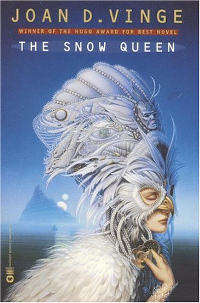
Hugh Howey – Silo (2011 – 2013)
Perceiving reality through a screen has recently become the life of many people … Philip K. Dick dealt with this theme in his novel The Penultimate Truth (1964), the double issue of which being the imprisonment and the maintenance of such a underground dystopian confinement : the media lie is orchestrated and sustained by the rare part of mankind which remains outside these caverns of steel, spending their life to maintain this lie : “Continue to work to support the war effort, the fate of humanity and our civilization depends on your work even if the outside world, completely irradiated, is no longer viable. ” Unlike Dick’s other texts, the keys of falsehood and reality are given to us rather quickly in a narrative whose stakes are more political than metaphysical.
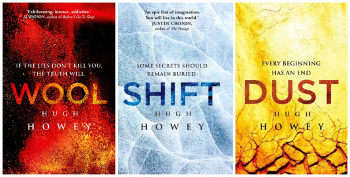
Hugh Howey takes up these themes in the Silo trilogy, whose three volumes are linked together and must be read in succession. One finds the elements of the concentration-like universe, the counter utopia, as many novels of the twentieth century seem not to have exhausted them, so we take pleasure in discovering this dark universe, that enclosed and confined humanity that does not even know anymore what it is like walking straight ahead, in a straight line. The world is circular, its social stratums run through interminable staircases that connect the various levels of the silo, which are the levels of society. Of course, men have internalized the reasons for their imprisonment as the leaden weight of the tyrannical domination that weighs on them. They have also incorporated the capital punishment that awaits any subversive spirit: to be condemned to leave! To see what is behind the giant screen that shows a dead, desolated, irradiated world, when no one is aware of the causes that have destroyed the world whose true nature is no longer clearly represented. In this universe, men have lost all clear representation of the stars and even the sky, as the memory of the past and knowledge of the history is mortal for society. The one condemned to death, excluded without return, will have to task to clean this screen, as the machines of the silo can not do it. The alienation is such that each condemned person will do it with good grace before enjoying his few moments of life outside, discovering a truth that he thinks very different from what he has always been taught.
Why is the world uninhabitable? Is it real? What’s out there? What layers of lies are stacked behind the screen and especially in the consciousness of the actors of dystopia, of those who must somehow pull the strings of the world? The repetition of these lies constitutes the heart of the intrigue of these three novels. Monstrous deceptions come back whenever you think you have the keys to this universe and what may have happened so that there remains only that small sample of humanity enclosed in that tiny cylindrical underground that becomes the world of generations which follow one another, in the invisible quest and the immobile journey of a society which, despite everything, works.
In many other dystopian novels, one is expected to discover the journey of a single main character who raises the veil of lies, of totalitarianism whose discourse is totally screened before the world, the life, the earth, the sky, the grass, the birds. Silo shows us by contrast the double course of the victim and the executioner through a veil of toxic smoke, of which the traveler is protected with an enormous jet of purifying nitrogen before leaving, in a protective suit meticulously manufactured in underground workshops. Everyone and everything is locked in lies and alienation, even those who organized everything in a political context that, like in Philip K. Dick’s novel, doesn’t have the slightest importance anymore after such a duration of confinement – but even this duration is perhaps false.
What is behind our screens and the world they give us, in the precision and accumulation of information from multiple sources concerning a reality that we do not have access to in our daily lives? The Hugh Howey’s trilogy is a masterful and exciting metaphor of the impalpable, but sturdy lies fabric that has replaced our relationship to the world by placing it behind a screen.
Charles Stross – Singularity Sky (2003) / Iron Sunrise (2004)
Technological singularity changes everything, even science fiction, which also becomes unpredictable. Thus, extraterrestrial invasions now take the form of raining mobile phones that can fulfill all your vows, even provide you with a cornucopia, provided you distract the aliens. The space combat between gigantic vessels armed with disproportionately pretentious guns is totally obsolete, such ships being cannibalized by stealth agents who will start by hacking their computer network. Earth has undergone significant political developments: the unity of sovereignty, for example the member of the UN, is no longer the nation state but the individual itself. And computers and Artificial Intelligences in all this? In the first place, whatever one may think, they are not divine. But what remains and can be known about them is extremely suspicious on the subject, especially about those who seek to provoke temporal paradoxes, even gently. Of course, there will always be retrograde dictatorships practicing censorship and limiting freedom of expression – one might even confuse censorship and breakdown of communications, with a little backwardness, for example that of an artificial intelligence having evolved in space for millions of years.
These two novels by Charles Stross depict a universe of speculation that is often very funny but at the same time so coherent, in the continuity of this balloon conceived by Vernor Vinge in Marooned in Realtime, which was already going beyond connected clothes or automatic cars of the newest Rainbows End novel. In a sense, it is the traditional SF which Charles Stross seizes, he shows us forms that have become obsolete by dint of having settled in an imaginary that has become too usual and easy. For example, think of differences between Star Trek’s spacecraft and Stargate’s ones, beyond their forms. Stross treats them like old, crushing clunkers.
It is difficult to deny the success of his endeavour in “Singularity Sky” which tells us a story dotted with all these inventions, new spaceships and social developments that pose a very original universe in its continuity with space opera. It is not a question of radically renewing gender, but of opening new speculative horizons to the reader from what he has already read, as well as the latest technological developments. The second novel, “Iron Sunrise“, leaves a more mitigated feeling. The universe is setteled, we only deepen the details in the frame of an adventure certainly full of twists, but which suffers from certain lengths and shows a model that is starting to run out of steam. If this text deserves the detour, we will appreciate the desire of Charles Stross not to pursue this universe by a third novel.
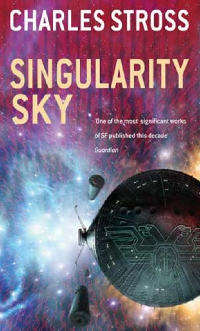
Olaf Stapledon – Odd John (1935)
Olaf Stapledon is presented as an unknown genius of science fiction during the interwar period, speculative work of a reputedly masterful range that can astonish today by its actuality or its timelessness as by its depths of view. The admiration which it arouses would make its reading impossible to circumvent for an eclectic amateur of science fiction.
I confess that this reading deeply disappointed me.
“Odd john” dates terribly by his writing and his style, which does not hold comparison for a moment with a contemporary like, for example, Lovecraft that can be read today without having the impression of exhuming something that we will still make the effort to read for fear of missing a meaning served by a really old form. Not to mention H.G. Wells. This imaginary biography of a superman in search of his own who tries to found a society that does not even reach the stage of utopia does not catch the stage of a true novel. Moral problems are presented in a sometimes grotesque manner, as this primitive society too happy to commit collective suicide to leave room for the supermen who partially subjugated or hypnotized them. There is perhaps a reference to Nietzsche in Stapledon’s character, who is hardly Nietzschean nor credible. Nietzsche’s reading is all the more appreciated.
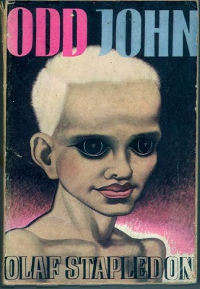
Olaf Stapledon – Star Maker (1937)
Star Maker is presented as the greatest Olaf Stapledon’s novel, sci-fi genius too little known, with a story of the future depicted in Last and First Men. A perceptible influence of this work’s themes can be found in a novel like Eternity, by Greg Bear, or his City at the end of time. These two great speculative and metaphysical novels also contain a reflection on the ultimate fate of man, civilization and intelligence.
But Greg Bear anchors his work in the profound origin of science fiction: utopia, the ideal city, including in the imaginary dimensions of its architecture that gives the reader to dream and travel at the same time that he has matter to think. Star Maker does not choose this approach, nor does it choose a truly narrative form since nothing is really told in this history of the Universe. A rare sci-fi book whose content doesn’t limits itself with the galaxy, nor even our neighbor Andromeda : Star Maker chooses to embrace all galaxies by distorting the mind of the main character who explicitly loses all Individuality as any personality. Never the least element illuminates what can happen to this man who wanders out of his house one evening to look at the stars. End of story, page 5.
Religious uneasiness is present in every chapter of this unsurpassable sized fresco, since it claims to assemble everything, including the life of the stars who, as conscious beings, finish by dancing a ballet to the glory of a improbable creator. So occupied by his multiple creations, in what universe can this Creator himself live, and what can he do between two creations, to distract himself ? This moves the problem in a way maybe unseemly, see Spinozist. Beyond an at least minimal probability that one would expect in a work with cosmological (ie scientific) scope, this text may present a poetic interest by the naivety of its religious questioning. I personally did not perceive it, but I remain admiring Greg Bear’s work, who went there to seek influences. Let’s hope it will not age as badly as Stapledon’s.
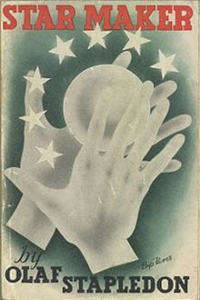
Robert Charles Wilson – Burning Paradise (2013)
Life is omnipresent in the universe, spreading through planetary systems by means of organisms such as spores that swarm on diverse worlds. This theory of panspermia is very different from what has so far explored Robert Charles Wilson in his famous Spin – Axis – Vortex trilogy, where the universe is populated by machines that colonize it on a temporal scale, ends and modes of expansion totally escaping us.
“Burning Paradise” offers us a very curious uchrony leaving a large part to the notion of network and technical progress controlled and monitored without the knowledge of humanity. This planetary conspiracy is discovered by the characters of the novel in a long journey in which are articulated discovery of self and discovery of a world which, to be close to our own, is no less very different, because the course of history has diverged from ours since several centuries. Robert Charles Wilson takes up classical themes here, such as the idea that everything is controlled by invaders who are already there, in our daily lives. We can discover their omnipresence through cracks and fissures in everyday life that challenge the character’s existence, now destined for a difficult struggle. We think of the famous series The Invaders, except that the nature of these invaders will prove very surprising, in the continuity of a literary work centered on the idea that, machines or living beings, the extraterrestrials will be totally different of little green men in a flying saucer.
Thus Cassie, one of the main characters, can not sleep on the eve of the commemoration of a century of peace since the armistice of 1914. She notices that a man observes her from the street below, and get crushed by a reckless driver. But the corpse is not human, and that what killed his parents seven years ago is beginning again. Then begins a long, very long track …
This novel is perhaps not the best of Robert Charles Wilson, but it fits very well in the continuity of his work and will attract the lovers of other texts, more ambitious.
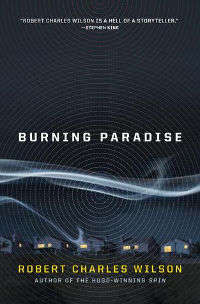
Robert Charles Wilson – The Perseids and Other Stories (2000)
A coherence is expected from a literary work, often through hundreds of pages which must establish a stable universe and intrigues exploited in their mutual crosses as in their ultimate consequences, forming the deep unity of a narrative. On the contrary, a collection of short stories can present us with very different facets of the same writer, without any other unity than the diversity of the same person. A much rarer gem consists of a set of short stories that explores the same theme, different occurrences of divergent echoes that nevertheless speak of the same thing and end up telling the same story, but with a multitude of points of view whose inconsistencies reinforce precisely the feeling of cohesion of the whole: there is one and the same story told to me in so many ways and points of view that I have only entry points into a kaleidoscope behind which lies a unity, but only a partial view is given. For this reason, such a text persists in dwelling its reader long after reading, as views of a richer world than what has been shown. Clark Ashton Smith’s Zothic world is an example of this imaginary matrix.
Robert Charles Wilson gives us here a treasure very different from his usual texts. It begins with a fantastic narrative about an increasingly rare place, which should concern every reader of odd books such as SF ones: a bookshop, his bookseller, his books, the stories he tells, and the dangers from the door at the back of the shop. Then the characters are multiplied for each of the many short stories of a very unusual science fiction. Then comes the return of a bookseller, the look back on the 70s and his survivors, for example in Toronto, and more. In closing this volume, one has the impression to have raised the corner of a secret veil, a mysterious universe that continues behind the door, or under the ground, or where the telescope of Edwin Hubble , “Who had cast a glance in the most ancient history of the sky.” Not to mention cats.
A sequel to Spin may not have been the best idea, but this collection of short stories can hardly be prolonged: the essential has already been written into the imagination of the reader. Absolute masterpiece.
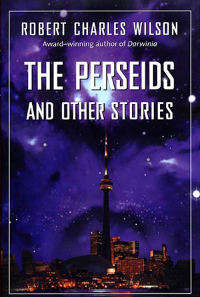
Connie Willis – The Doomsday Book (1993)
At the beginning of this book, it is difficult to understand why he was rewarded with the 1993 Hugo Prize. It is a journey through time. The University of Oxford is responsible for this. It is clear that the journey of the young historian Kivrin Engle just before the epidemic of the Black Death will go wrong. We know from the start that the past is not modifiable and that there will be no complex temporal paradoxes. The stakes seem all the more restricted because it does not seem that we will go much further than a tiny village in the English countryside of the fourteenth century.
However, a mysterious epidemic is taking place in the present, redoubled by administrative problems and the struggle for influences within the university, the scale of which is confined to a comedy skillfully maintained throughout a history very well carried out as the narration flows with the discovery of charming characters. Little by little, this back and forth between two epidemics takes shape as the story becomes less and less comic; if there can be a “happy” ending for the nice teacher to get the young student back from the distant past, this story will leave very deep traces in the life and the person of this young woman confronted with the plague, and the way of which humans live this omnipresent death, gradually invading all this winter world. The human stakes transcend those of time travel in a brilliant way, that they pass through pettiness, malice, the innocence of childhood or the admirable moral grandeur of a banal village priest.
A remarkable story, staged by characters who gain depth and realism beyond a mundane journey through time. A moving novel, without a line in spite despite its apparent length.
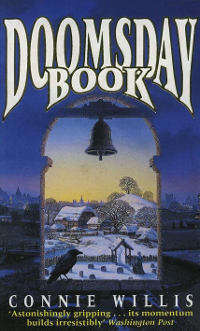
Jack Mc Devitt – Seeker (2005)
Space archaeology is one of the greatest themes of science fiction: it is the cute sin of Captain Jean Luc Picard, it inaugurates major novels like Vernor Vinge’s Fire upon the deep. The fascination for an immemorial past and a mysterious wisdom hidden behind technological prodigies that surpass us are based on texts as classic as Rendez vous with Rama.
However, science fiction is expected to be always a metaphor of the present and not a simple imitation of our everyday life with some technological elements so common and agreed that nowadays a simple connected fridge can conceal more imaginary possibilities than a spaceship, depending on how it is staged. Can we still talk about science fiction in the framework of a strict police investigation conducted by archaeologists motivated by the mere earning of profit? The relics of the space voyage are expected to be a thrill that at least confusingly recalls the one we get from the Nostromo or the relics that his crew explored at the beginning of this cinematographic monument, Alien. A “simple” mass of corpses in an old metal carcass, even very large, remains much less stimulating …
It is true that Jack McDevitt is able to tell us a story and keep us in suspense with a lost colony that sought to flee the course of human history long ago. He also knows how to rebound his intrigue beyond the discovery of a wreck which is alas nothing very exhilarating … However, it does not seem that this universe, very distant in time and space but is almost like ours, could be such as to arouse the enthusiasm or even the emotion of space archaeology lovers. The quests of the El Dorado in the Amazon jungle can still sometimes reveal some surprises in contrast to this text whose characters even lack depth, because too modeled on the banality of our daily lives.
